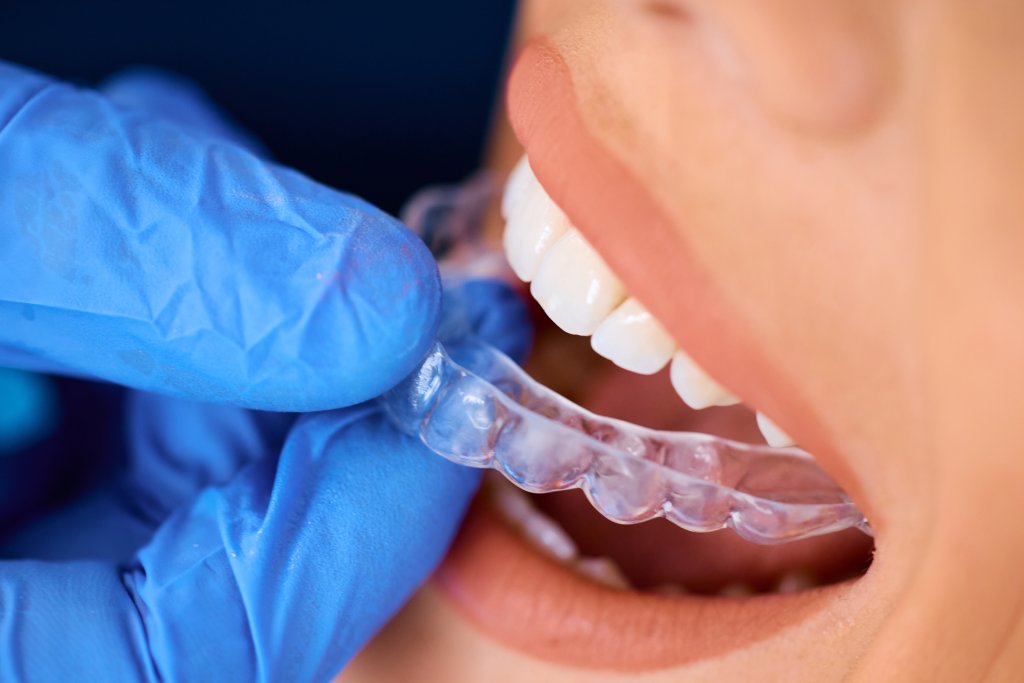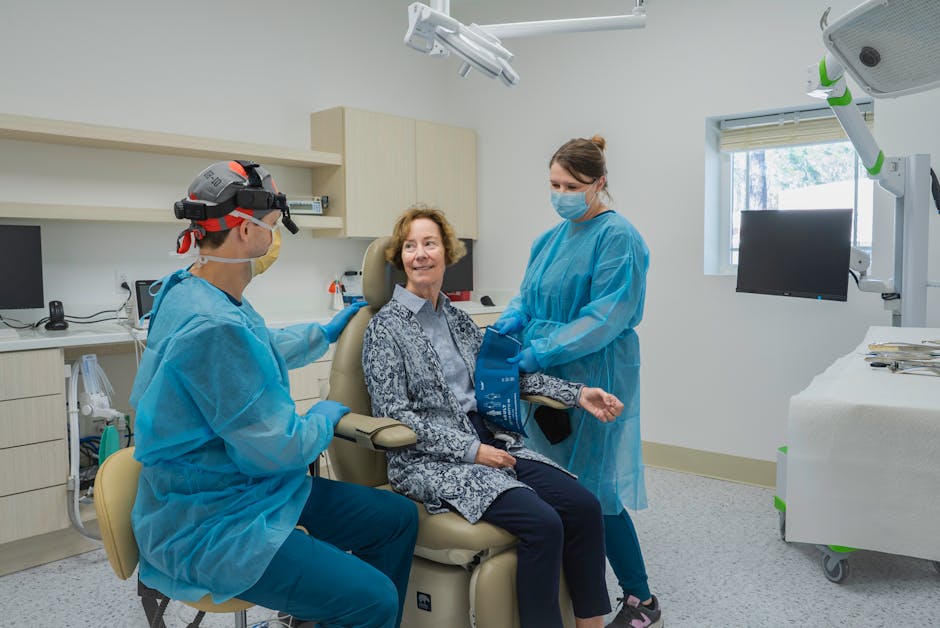Early periodontitis is a concerning stage of gum disease that can affect your oral health significantly if left unchecked. In this early stage, inflammation affects the gums, leading to the formation of periodontal pockets where plaque and bacteria thrive. The good news is that if detected early, this condition is preventable and manageable with good oral hygiene practices and regular dental check-ups.
- Definition: Early periodontitis is marked by gum inflammation and initial signs of damage to the bone structures supporting the teeth.
- Symptoms: Look out for swollen gums, bleeding during brushing or flossing, and persistent bad breath.
- Prevention: Maintain a routine of brushing twice daily, flossing, and visiting your dentist regularly.
I’m D.D.S. Marta Milejczyk, and with a career spanning over two decades in practicing family dentistry, I have specialized in diagnosing and treating early periodontitis among other dental concerns. Together, we’ll explore the nuances of this condition and empower you with the knowledge to safeguard your oral health.

Understanding Early Periodontitis
Early periodontitis is an early stage of gum disease that silently creeps in when plaque and tartar start to build up on your teeth. It begins with gum inflammation, which might not cause pain but can lead to serious issues if ignored.
Gum Inflammation
Gum inflammation is the body’s natural response to the bacteria found in plaque. When plaque isn’t removed, it hardens into tartar, which can only be cleaned by a dental professional. This inflammation is a warning sign that your gums are under attack.
Plaque Buildup and Tartar
Plaque is a sticky film of bacteria that forms on your teeth. If not cleaned away through regular brushing and flossing, it turns into tartar. This hard substance clings to the teeth and irritates the gums, making inflammation worse.
Periodontal Pockets
As the gums become inflamed, they may start to pull away from the teeth, forming periodontal pockets. These pockets are small gaps where plaque, tartar, and bacteria can hide and thrive. If left untreated, these pockets can deepen, leading to more severe gum disease and even bone loss.
By understanding these key elements of early periodontitis, you can take proactive steps to maintain your oral health. Regular dental check-ups and good oral hygiene practices are crucial in preventing this condition from progressing.
Up next, we’ll dig into the symptoms of early periodontitis and how to recognize them before they become a bigger issue.
Symptoms of Early Periodontitis
Recognizing the symptoms of early periodontitis is crucial for preventing further damage. This stage of gum disease often sneaks up on you without causing pain. But if you know what to look for, you can catch it early and take action.
Red and Swollen Gums
One of the first signs is red and swollen gums. Healthy gums should be firm and pink. When plaque builds up, your gums can become inflamed, leading to redness and puffiness. This is your body’s way of signaling that something is wrong.
Bleeding Gums
Bleeding during brushing or flossing is another common symptom. While a little bleeding might not seem like a big deal, it’s not normal. Healthy gums shouldn’t bleed. If yours do, it’s a sign of gum disease that needs attention.
Gum Sensitivity
You might also notice gum sensitivity. This can make brushing, flossing, or even eating certain foods uncomfortable. Sensitive gums are often tender to the touch and can be a sign that your gums are inflamed.
Bad Breath
Persistent bad breath, or halitosis, is another indicator. If you find that your breath doesn’t improve after brushing, it might be due to bacteria thriving in periodontal pockets. These bacteria produce toxins that cause an unpleasant odor.
Receding Gums
Receding gums occur when the gum tissue pulls away from the teeth. This can make your teeth look longer than usual and expose the roots, increasing the risk of decay and sensitivity.
Loose Teeth
In more advanced cases, you might notice loose teeth. This happens when the supporting structures, like the jawbone and gum tissue, start to weaken. Loose teeth are a serious sign of periodontal disease and require immediate dental care.

Understanding these symptoms can help you catch early periodontitis before it progresses. If you notice any of these signs, it’s time to schedule a dental appointment. Early intervention is key to preventing more serious issues.
Next, we’ll discuss how dentists diagnose early periodontitis and what to expect during an examination.
Diagnosing Early Periodontitis
Once you suspect early periodontitis, the next step is to get a proper diagnosis from a dental professional. Diagnosing this condition involves a few simple but crucial steps.
Visual Inspection
The first step in diagnosing early periodontitis is a visual inspection. Your dentist will look for telltale signs like red, swollen gums, and any visible plaque or tartar buildup. They’ll also check for gum recession and any changes in gum color or texture. This initial examination helps identify areas that need further attention.
Probing
Next, your dentist will use a special tool called a periodontal probe. This tool measures the depth of the spaces, or pockets, between your teeth and gums. Healthy pockets are typically between 1 to 3 millimeters deep. If the probe shows deeper pockets, it’s a sign that gum disease may be present.
X-rays
Finally, X-rays are used to get a clear picture of what’s happening beneath the gum line. These images can reveal bone loss, which is a serious consequence of untreated periodontitis. X-rays also help in assessing the extent of the disease and in planning the best course of treatment.
By combining these diagnostic tools, your dentist can accurately diagnose early periodontitis and create a personalized treatment plan. Early diagnosis is crucial because it allows for interventions that can stop the disease from progressing.
In the next section, we’ll explore various treatment options available for managing early periodontitis and how you can take action to protect your oral health.
Treatment Options for Early Periodontitis
Once early periodontitis is diagnosed, it’s important to start treatment quickly to prevent further damage. Here are some of the most effective treatment options:
Scaling and Root Planing
Scaling and root planing is a non-surgical procedure that cleans deep under the gums. Dental professionals use special tools to remove plaque and tartar from the teeth and roots. This process helps the gums heal and reattach to the teeth, reducing pocket depth. It’s usually done under local anesthesia and may require multiple visits.
Antibiotics
In some cases, antibiotics are prescribed to control bacterial infection. These can be taken orally or applied directly to the gums. Antibiotics help reduce the bacteria that contribute to gum disease, making other treatments more effective.
Oral Hygiene Practices
Good oral hygiene is crucial for managing early periodontitis. This means brushing your teeth twice a day with a soft-bristled toothbrush, flossing daily, and using an antiseptic mouthwash. These practices help keep plaque and bacteria at bay, preventing the disease from getting worse.
Regular Dental Visits
Regular check-ups and professional cleanings are essential. While most people visit the dentist twice a year, those with early periodontitis might need more frequent visits, such as every three to four months. These visits allow your dentist to monitor your progress and catch any signs of worsening disease early.
Lifestyle Changes
Certain lifestyle changes can also help manage early periodontitis. Quitting smoking, reducing alcohol consumption, and eating a balanced diet can improve your overall oral health. Smoking, in particular, is a major risk factor for gum disease, so quitting can significantly improve treatment outcomes.
By following these treatment options, you can effectively manage early periodontitis and protect your oral health. In the next section, we’ll address some frequently asked questions about early periodontitis, including its reversibility and what the early stages look like.
Frequently Asked Questions about Early Periodontitis
Can early periodontitis be cured?
Early periodontitis can’t be completely cured, but it can be effectively managed. With early intervention, you can stop it from getting worse. Treatments like scaling and root planing help clean the gums and remove harmful tartar. Antibiotics may also be prescribed to control the infection. Along with professional treatment, maintaining good oral hygiene at home is crucial. This means brushing twice a day, flossing daily, and using an antiseptic mouthwash. Regular dental visits are also essential to monitor progress and catch any signs of worsening disease early.
What does the beginning of periodontitis look like?
The beginning of periodontitis often looks like swollen and tender gums. You might notice your gums are redder than usual and bleed easily, especially when you brush or floss. These are signs of gum inflammation, which is an early warning of gum disease. Bad breath, or halitosis, is another common symptom. If you spot any of these signs, it’s important to see a dentist as soon as possible for an evaluation.
Is early periodontitis reversible?
The good news is, with early intervention, the damage from early periodontitis can often be reversed. At this stage, the condition is similar to gingivitis, which is the mildest form of gum disease. If caught early, professional treatments combined with improved oral hygiene can heal the gums and restore their health. However, once periodontitis progresses to more advanced stages, the damage becomes harder to reverse. That’s why recognizing the symptoms early and seeking treatment promptly is so important for maintaining healthy gums and teeth.
Conclusion
At DP Dental Studio, we understand that maintaining optimal oral health is essential for your overall well-being. Early periodontitis can be a serious concern, but with personalized care and timely intervention, we can help you keep your gums healthy and your smile bright.
Our team is committed to providing you with the best dental care in a welcoming environment. We offer virtually painless treatments and work closely with insurance providers to maximize your benefits, making oral care accessible and affordable.
Early detection and treatment are key to managing periodontitis effectively. If you notice any symptoms like swollen gums or persistent bad breath, don’t wait. Reach out to us for a thorough evaluation. Our experienced dentists will develop a custom plan that meets your unique needs.
By choosing DP Dental Studio, you’re taking an important step toward achieving optimal oral health. Our dedicated team is here to support you on this journey. Let’s work together to ensure your gums stay healthy and your teeth remain strong.
For more information about our periodontal disease therapy, visit our Periodontal Disease Therapy page. We’re here to help you maintain a beautiful, healthy smile.


